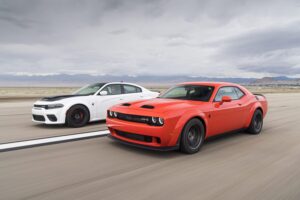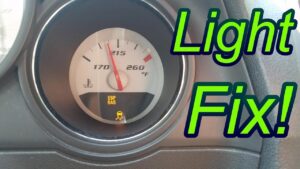Can you charge a motorcycle battery with a car battery? The short answer is yes, but there are a few things you need to consider. If you find yourself in a situation where your motorcycle battery is dead and you have access to a car battery, it can be a viable solution to get your bike up and running again. However, it’s important to understand the process and potential risks involved in using a car battery to charge your motorcycle battery. In this article, we will walk you through the steps, precautions, and limitations of charging a motorcycle battery with a car battery. So, if you’re looking for a solution to power up your motorcycle, keep reading!
Can You Charge a Motorcycle Battery with a Car Battery?
If you find yourself with a dead motorcycle battery and no immediate access to a charger, you may wonder if it’s possible to use a car battery to get your bike up and running again. While both car and motorcycle batteries serve the same general purpose of powering vehicles, there are some important differences to consider before attempting to charge one with the other.
In this article, we will explore the possibility of using a car battery to charge a motorcycle battery. We will discuss the compatibility of the two battery types, the potential risks involved, and provide step-by-step instructions on how to safely perform a car-to-motorcycle battery recharge if it is indeed feasible.
Compatibility of Car and Motorcycle Batteries
At first glance, car and motorcycle batteries may appear similar, but several key differences set them apart. Car batteries are typically larger and have a higher capacity than motorcycle batteries to meet the power demands of larger engines. Additionally, car batteries are designed to deliver a significant amount of cranking amps to start a car’s engine, while motorcycle batteries are optimized for smaller engines.
Due to these differences, car batteries use a 12-volt system, while motorcycle batteries commonly operate at 6 volts or 12 volts. However, it’s worth noting that some motorcycles, especially larger models, may have a 12-volt battery system similar to cars. It’s essential to determine the voltage of your motorcycle battery before attempting to charge it with a car battery.
The Risks Involved
While connecting a car battery to a motorcycle battery might seem like a simple solution, there are potential risks to consider:
1. Overcharging: Car batteries have a higher charging voltage than most motorcycle batteries. If you connect a car battery directly to a motorcycle battery and leave it unattended, the higher voltage may overcharge the motorcycle battery, causing it to swell, leak acid, or even explode.
2. Electrical System Damage: Motorcycle electrical systems are not built to handle the higher voltage output of a car battery. Connecting a car battery to a motorcycle could damage the motorcycle’s electrical components, including the charging system, rectifier, and delicate electronics.
3. Short Circuit: Improperly connecting the terminals of the car and motorcycle batteries can lead to a short circuit. This can cause damage to the batteries, wiring, and even pose a fire hazard.
Given these potential risks, charging a motorcycle battery with a car battery should only be done as a temporary solution and with extreme caution.
Step-by-Step Instructions for Charging a Motorcycle Battery with a Car Battery
If you find yourself in a situation where charging your motorcycle battery with a car battery is the only option available, follow these step-by-step instructions to minimize risks and ensure safe charging:
1. Verify Compatibility: First, verify that your motorcycle battery operates at the same voltage as the car battery. If your motorcycle battery is 6 volts, do not attempt to charge it with a 12-volt car battery.
2. Gather Materials: You will need a set of jumper cables with clips on each end, an insulated wire with alligator clips, and protective gloves.
3. Safety Precautions: Ensure both vehicles are turned off, and the ignition keys are removed. Wear protective gloves to avoid contact with battery acid.
4. Connect the Jumper Cables: Attach one end of the positive (red) jumper cable to the positive terminal (+) of the car battery. Connect the other end of the positive jumper cable to the positive terminal (+) of the motorcycle battery.
5. Connect the Jumper Cables (Continued): Attach one end of the negative (black) jumper cable to the negative terminal (-) of the car battery. Instead of connecting the other end directly to the motorcycle battery, attach it to a metal part of the motorcycle’s engine or frame. This helps prevent potential damage to the motorcycle’s electrical system.
6. Start the Car: Start the car’s engine and let it run for a few minutes to allow the car battery to transfer some charge to the motorcycle battery.
7. Start the Motorcycle: Attempt to start the motorcycle while the car engine is still running. If the motorcycle starts successfully, leave it idling for a few minutes to further charge the battery. If it doesn’t start, do not continue attempting to charge it.
8. Disconnect the Jumper Cables: Once the motorcycle has started and is idling, carefully disconnect the jumper cables in the reverse order: negative terminal of the motorcycle battery, negative terminal (-) of the car battery, positive terminal (+) of the motorcycle battery, and finally, the positive terminal (+) of the car battery.
It is crucial to note that this method is only a temporary solution to get a dead motorcycle battery running. It is strongly recommended to replace the discharged motorcycle battery as soon as possible or recharge it using a dedicated motorcycle battery charger.
While it is technically possible to charge a motorcycle battery with a car battery, there are significant risks involved. Differences in voltage, battery capacity, and electrical system compatibility can lead to overcharging, component damage, and even safety hazards. It is advisable to utilize this method only as a last resort and for a short duration. It is always best practice to use a dedicated motorcycle battery charger or seek professional assistance for proper and safe battery recharging.
Remember, the long-term health and performance of your motorcycle’s electrical system depend on using the appropriate charger and maintaining your battery properly.
Frequently Asked Questions
Can you charge a motorcycle battery with a car battery?
Yes, it is possible to charge a motorcycle battery with a car battery. However, there are a few considerations to keep in mind to ensure a safe and effective charging process.
What do I need to charge a motorcycle battery with a car battery?
To charge a motorcycle battery with a car battery, you will need a set of jumper cables or a battery charger that is compatible with both the car and the motorcycle batteries. It is important to ensure that the voltage and polarity of the batteries match.
Can I charge a motorcycle battery from a running car?
Yes, you can charge a motorcycle battery from a running car. The running car’s battery will provide the necessary power to charge the motorcycle battery. However, it is important to follow the correct procedures and safety precautions to avoid any damage to the batteries or electrical systems.
How do I connect the car battery to the motorcycle battery for charging?
To connect the car battery to the motorcycle battery for charging, follow these steps:
1. Ensure both vehicles are turned off.
2. Connect the positive (+) terminal of the car battery to the positive terminal of the motorcycle battery using a jumper cable.
3. Connect the negative (-) terminal of the car battery to a grounded metal surface on the motorcycle, away from the battery.
4. Start the car engine and let it run for a few minutes to supply power to the motorcycle battery.
Is it safe to leave the car running while charging a motorcycle battery?
It is generally safe to leave the car running while charging a motorcycle battery, as long as you follow the correct procedures and safety precautions. However, it is important to monitor the charging process and avoid overcharging the motorcycle battery. If the car battery starts to overheat or show signs of damage, it is recommended to stop the charging process immediately.
Can I charge a motorcycle battery with a car battery while still connected to the motorcycle?
Yes, you can charge a motorcycle battery with a car battery while it is still connected to the motorcycle. However, it is essential to ensure that the ignition and all electrical accessories on the motorcycle are turned off to avoid any potential electrical issues. Additionally, double-check the battery connections and make sure they are secure before starting the charging process.
Final Thoughts
Charging a motorcycle battery with a car battery is possible, but caution must be exercised. Connecting the two batteries directly can result in damage to both batteries and the electrical systems of the vehicles. It is essential to use a suitable charger to regulate the charging process and prevent overcharging. Additionally, motorcycle batteries and car batteries have different voltage and capacity requirements, so it is crucial to consider these factors. In conclusion, while it is technically feasible to charge a motorcycle battery with a car battery, proper equipment and knowledge are necessary to avoid any damage or safety risks.


